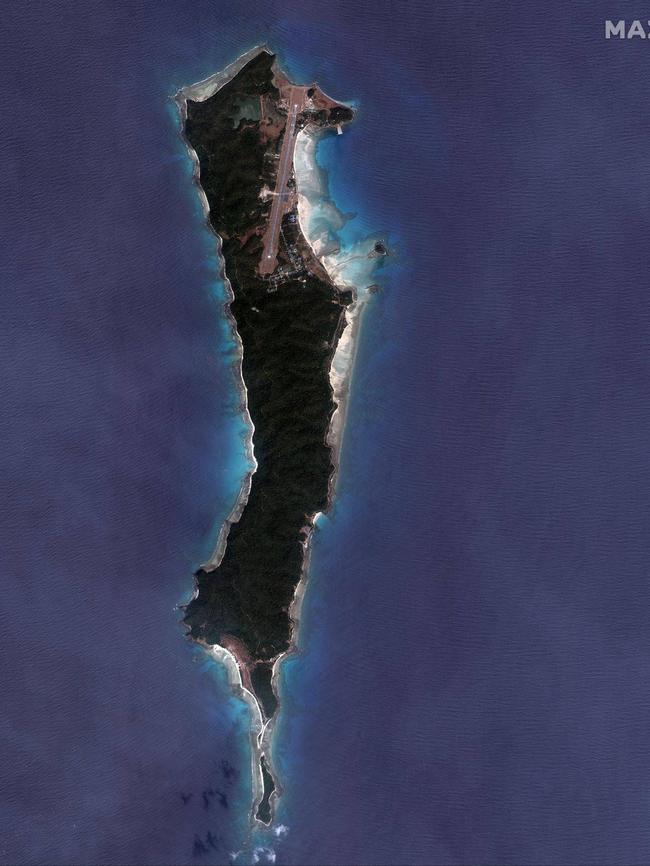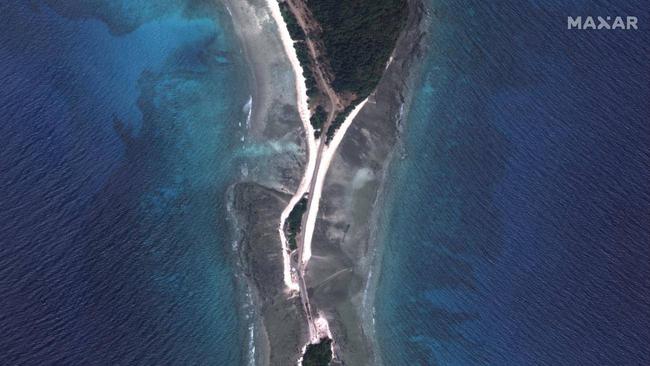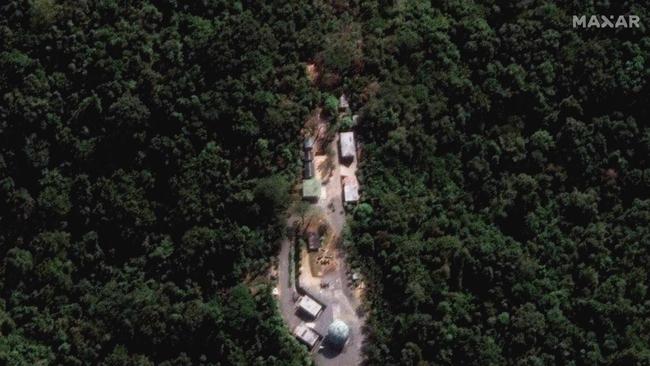Eyes on China in Myanmar military build-up in Bay of Bengal
Chatham House warns that Great Coco Island could provide the PLA with a key maritime surveillance base in the Indian Ocean.

A military build-up on Myanmar’s Great Coco Island in the Bay of Bengal – 50km from India’s sensitive Andaman and Nicobar chain – has sparked fears China could be aiding efforts to heighten the junta’s surveillance capacity in a key regional waterway.
Satellite pictures from January and March show two new hangars, a new causeway and what appears to be an accommodation bloc near a freshly lengthened 2300m runway and radar station on the island, according to British think tank Chatham House.
More images taken in the past fortnight show land-clearing efforts indicating more construction work to come, at a time of Beijing’s growing influence over isolated and cash-strapped Myanmar.

“The militarisation of the Coco Islands could pose a significant security challenge to India and its navy … as New Delhi seeks to counter China’s growing influence in South Asia and the Indian Ocean region,” researchers Damien Symon and John Pollock wrote in a weekend analysis of satellite data taken by Maxar technologies for Chatham House.
“With the Coco Island developments, India may soon face a new air base close by in a country increasingly tied to Beijing.”
The report offers no evidence of Chinese involvement in the military build-up just north of the Andaman and Nicobar chain, which New Delhi sees as critical to its ability to maintain its Indian Ocean sphere of influence, though Beijing is already investing billions of dollars in the Chinese Myanmar Economic Corridor and a deep-sea port in Rakhine State.
The Andaman and Nicobar archipelago is home to a multi-force Indian presence, warships, aircraft and missile batteries, and provides India’s Eastern Fleet with strategic depth in the Bay of Bengal as well as command approaches to the Strait of Malacca.

The construction on Great Coco closely mirrors work undertaken on Chinese-claimed islands in the South China Sea, and in cash-strapped neighbouring countries – Sri Lanka’s Hambantota, Cambodia’s Ream naval base and Pakistan’s Gwadar base – where Chinese companies have built similar military-grade airfields with a view to future People’s Liberation Army access.
Euan Graham, a senior fellow at Singapore’s International Institute for Strategic Studies, said Chinese involvement could not be discounted, given Great Coco offered easy monitoring of the Malacca Straits – a shipping lane vital for Chinese energy imports – and the Bay of Bengal, the most likely location for future Indian nuclear-armed submarine deterrence patrols.
The Bay of Bengal is also where India conducts its missile tests.
“Another potential use of access to Coco for the PLA would be to extend over-the-horizon targeting coverage for its conventional ballistic missiles, including the DF-21D and DF-26, which is reputed to have a range of 2500 miles, from bases in western China,” Dr Graham said.

Many analysts have pointed to the fact the Myanmar junta lacks the resources to undertake the work revealed in the satellite photos.
David Brewster, a senior research fellow at the ANU National Security College, said the extended airstrip on Great Coco was far beyond the needs of the Tatmadaw’s (Myanmar’s military) small maritime surveillance fleet, and appeared designed to “create options for the Tatmadaw and also potentially the Chinese”.
Still, he added, granting sustained Chinese access to military facilities would represent a major change in policy for the highly nationalistic Myanmar military, which also faced mounting tensions with Bangladesh over its refusal to repatriate more than a million Rohingya refugees.
Speculation dates back decades over China’s alleged use of the Great Coco Islands to monitor Indian naval movements, despite India’s own navy chief debunking those rumours in 2005. Eurasia Group South Asia head Pramit Pal Chaudhuri said India would likely take a “wait and watch” position over the latest issue, given it “continues to believe the Tatmadaw is too xenophobic to compromise its sovereignty to too great a degree with China”.
But the Chatham House report warned Myanmar’s international isolation, coupled with its increasing dependence on Chinese capital since the February 2021 coup, meant Great Coco could “potentially be a point of future leverage”.
“Were Myanmar to get the base fully established, surveillance flights could track movements to and from the Andaman and Nicobar Islands,” it noted. “Given China’s well-established intelligence practices, local intelligence from Great Coco could find its way, either through espionage or consent, to Shanghai.”




To join the conversation, please log in. Don't have an account? Register
Join the conversation, you are commenting as Logout